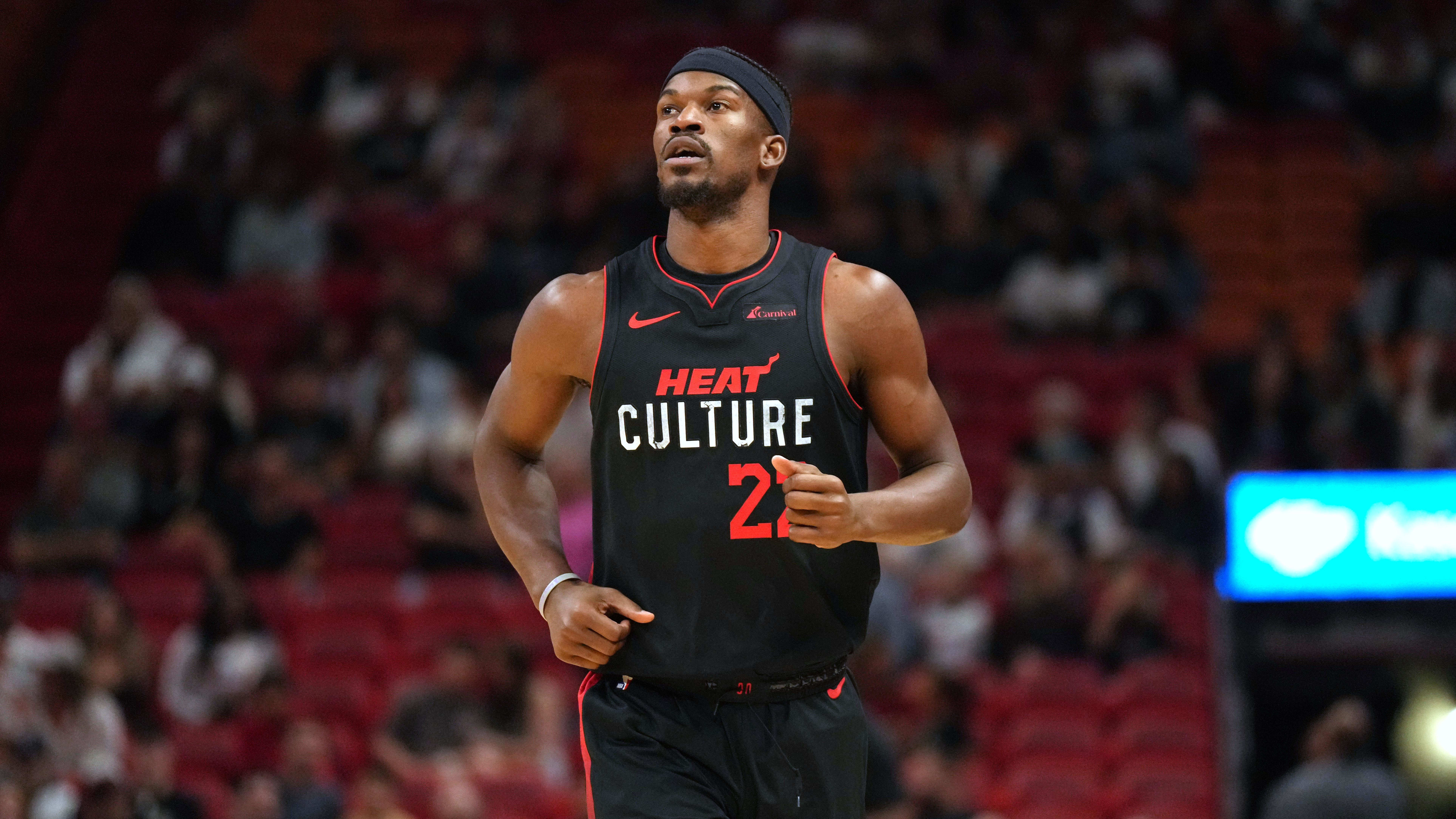Lifestyle
'When I Think of You' could be a ripped-from-the-headlines Hollywood romance


An edgy, hyper-current Hollywood based second-chance romance between former college sweethearts, Myah Ariel’s debut novel When I Think of You radiates breakout energy. It’s like a fizzy, angsty mash-up of Bolu Babalola’s 2022 campus love story Honey and Spice and Kennedy Ryan’s movie set workplace romance Reel as the challenges of doing meaningful work in Hollywood threaten two young lovers’ romantic reunion.
Kaliya Wilson is an under-employed and chronically under-appreciated film school graduate in Los Angeles; her filmmaker ex-boyfriend Danny Prescott is the only son of a legendary director. Years after their breakup, he’s on the cusp of making a movie inspired by his parents’ epic interracial romance, which began in the Jim Crow South, while she’s stuck behind the reception desk of a studio. They haven’t spoken in years, and the breakup was abrupt and brutal. So when Danny walks back into Kaliya’s life offering a coveted slot on his team, she’s in a difficult spot. This film offers a chance to get out of a dead-end job she’s been stuck in “for three years too long” and into the creative trenches. It also means reentering the orbit of the person who should have been her one true love but instead ripped her heart to pieces.
When I Think of You’s premise is enticing and well executed — multilayered and well-written with characters that are nuanced and human. Ariel draws both the characters and their challenging situations with wry, exacting precision. The pleasure is in the details. In the face of an opportunity of a lifetime, Kaliya hesitates because, as Danny notices with chagrin, she doesn’t trust him. Their totally sweet, storybook college romance burned fast and hot and ended badly, and ever since Kaliya has wanted nothing to do with Danny. Ariel depicts this vividly showing that even compared to the drudge work and petty humiliations she endures on a daily basis, for Kaliya “somehow Danny’s return is more upsetting.”
It’s also nice to read a romance in which both of the 20-something characters are so equally loveable, vulnerable and fallible. Danny is talented, hard-working and earnest but also, admittedly, that most infamous of Gen Z stereotypes – a Hollywood nepo-baby. As Ariel writes: “everybody knows exactly who Danny is: the son of Nathan Prescott — prolific auteur director and four-time Oscar winner, who, according to our film school textbooks, perpetually succeeded in striking the elusive balance between art and commerce.” As the biracial son of a famous director, Danny enjoys multiple privileges, some more obvious than others. He’s had a major advantage in a world that Kaliya finds almost impenetrable. Danny knows the industry, but doesn’t really get how hard it is for a young Black woman who lacks his contacts to gain traction in her career. When they meet again, he asks her what happened to her as if the idea of not making it in this world is inexplicable. Ariel also explores Danny’s masculinity and light skinned, biracial white adjacency, a type of privilege that isn’t often explored and called out as precisely in traditionally published romantic fiction (writers like Kennedy Ryan and Bolu Babalola being two notable exceptions). Ariel handles all of these nuances of identity effectively.
What’s especially effective about this nuanced character work is how well it dovetails with events unfolding in the movie’s production and the hurdles that these characters face at work and in their relationship. An early consequence of Danny’s lack of savvy (and lack of backbone at times) is that Kaliya gets a demotion from personal assistant to production assistant before she even starts due to the nepotism of a minor character who will eventually play a pivotal role. The revelation is a blow, which Kaliya struggles to rationalize to her best friend and roommate Neha, saying: “I guess I can’t really be mad at Danny…Bella’s family basically went behind his back to buy her that job on the production, and with the future of the movie hanging in the balance, his hands are tied.” Fair enough, but as Ariel smartly has Nyah point out, it’s also true that Danny convinced her “to quit your job and work for him without making sure he could actually follow through on the offer.” Within this unmeritocratic and cutthroat world, Danny’s blindness to his industry’s and business partners’ biases and manipulations realistically put his movie and his relationship with Kaliya in jeopardy.
Some romance purists might balk at the weight placed on the professional conflict and personal growth, but their connection is beautiful and the personal, professional and the (implicitly) political all blend together very convincingly in Ariel’s hands. The drama unfolding behind the scenes of the movie, which pulls the two leads apart, has a ripped-from-the-headlines feel. Controversies over sleeping with “the help,” nepotism and wokeness are all depicted with journalistic precision. There’s even an antagonist that sounds like billionaire Nathan Peltz, who last month challenged Disney’s leadership for control of the company’s creative direction. Arguing that there was too much attention to diversity and wokeness, Peltz said, “People go to watch a movie or a show to be entertained […] They don’t go to get a message,” questioned “Why do I have to have a Marvel that’s all women?” and criticized Black Panther’s Black cast. But the Disney battle and Peltz’s statements came long after Ariel finished her manuscript.
The similarities between the Disney fight and Danny and Kaliya’s studio battle is a testament to how well the author knows this territory. Like her leads, Ariel is an NYU Tisch Film school grad who worked in Los Angeles. She knows their world intimately. In When I Think of You, Ariel transforms hard-won knowledge into a compelling romantic fiction that is a lovely balance of realism and swoon.
A slow runner and fast reader, Carole V. Bell is a cultural critic and communication scholar focusing on media, politics and identity. You can find her on Twitter @BellCV.

Lifestyle
A poet searches for answers about the short life of a writer in 'Traces of Enayat'


As a young literature student in the 1990s, the Egyptian poet Iman Mersal stumbled across a copy of Love and Silence, a forgotten 1967 novel by a writer named Enayat al-Zayyat who died by suicide in her 20s — a few years before her book was released.
Mersal was taken with the book’s “fresh and refreshing” language and emotional intensity; it exerted such power over her that the moment she finished reading it, she “turned back and began again… [copying] out passages, small stand-alone texts like lights to illuminate my emotional state.” At the time, Mersal was establishing herself as a reader and writer, and felt the need to “personally celebrate the books which ‘touched’ her, as though she needed to define herself by appending her discoveries to the canon.”
Decades later, she remains engaged in that project, at least where Enayat is concerned. Now an established poet living in Canada, Mersal set out to learn as much as she could about Enayat’s life and death — enough, ideally, to write the other woman’s life story. Although she did not uncover nearly enough to achieve that goal, she still presents the resulting book, Traces of Enayat, as a biography of sorts. It isn’t. Traces of Enayat is a memoir of Mersal’s search, a slow, idiosyncratic journey through a layered, changing Cairo and through Mersal’s mind.
Mersal is a cool, restrained writer. Her prose, in Robin Moger’s translation, slips by easily, so that her moments of flaring emotion stand out. In contrast, the excerpts of Love and Silence she includes are hot with description and feeling. In one, Enayat describes feeling “at once imprisoned by this life and pulled toward new horizons. I wanted to pull this self clear, gummy with the sap of its surroundings; to tear free into a wider world.” It seems evident that Mersal chose this passage for its echo of Enayat’s story. Certainly it evokes one of Traces of Enayat‘s central questions: “Was it [Enayat’s] decision to end her life that drew me to her,” Mersal writes, “or the thought of her unrealized potential” — the wider literary world Enayat never reached? More vexing still is the question not of what draws Mersal to Enayat, but why Enayat’s hold over her is so powerful. At the end of the memoir, it’s still not clear.
Of course, Traces of Enayat is not designed to satisfy. It’s there in the title: we’re only going to get glimpses and fragments of its subject — or, really, its subjects. Mersal hides herself behind her search for Enayat; Enayat herself hides in the past. Her best friend, the actress Nadia Lutfi, remembers her vividly, but was too busy working to be fully present for some of Enayat’s bitterest disappointments; Enayat’s surviving relatives, meanwhile, recall her painful divorce and the rejection of her book by the publisher she’d hoped would release it, but they never had the emotional access to her that Nadia did.
Even Enayat’s tomb is hidden. She turns out to be buried in a side wing of a family member’s mausoleum and, after much investigating, Mersal manages to visit. This is the book’s emotional high point. Mersal weeps, not out of grief but because “standing there in front of her headstone was the high point of our relationship… the tomb was the only place where she actually was. For her life, I had to return to the archive, to the memories of the living, and my own imagination, but I felt now that at last she trusted me, that she had allowed me to reach her.” For the first time here, Mersal allows her interest in Enayat to transform on the page into a nearly mystical connection before moving swiftly away from the tomb and the scene. For the reader, this is an answer of sorts: Mersal’s link to Enayat goes in some way beyond the explicable. We can’t experience it for ourselves.
What we can experience is Mersal’s investigation of Egypt after the Nasserist revolution of 1952, the context for Enayat’s book and its disappearance. Enayat’s work and life do not fit neatly into the prevailing narrative that “Arab women writers [of the period] were primarily concerned with nationalism, that there could be no liberation for women without the liberation of the nation.” Love and Silence is about grief and romance; its author, meanwhile, had to battle sexist Nasserist divorce laws to free herself from her husband and couldn’t get the court to give her full custody of her son.
Mersal pieces this story together slowly, speculating about the role of Enayat’s divorce and one subsequent romantic relationship in the end of her life. She does archival work and visits the places still left from Enayat’s Cairo, superimposing the post-revolutionary city Enayat lived in — full of new hopes and colonial legacies — on the contemporary one she describes. These moments are, like the book’s other strands, fragments and flickers. Mersal passes over geography the way her prose tends to pass over emotion, never lingering in one place long enough to describe it in depth.
Mersal is a poet and this is, fundamentally, a poet’s strategy. A poem is, more often than not, a peek through a cracked window, a fleeting experience rather than a drawn-out one. But Traces of Enayat is a full book, and the degree to which it feels swift and partial is at once a literary achievement and a frustration. In its last passage, Mersal writes that Enayat “wants to remain free and weightless.” Maybe so. But by letting Enayat have what she wants, Mersal denies the reader a deeper experience of her own obsession.
Lily Meyer is a writer, translator, and critic. Her first novel, Short War, was published in April 2024.
Lifestyle
Emotional support alligator, once in the running for America’s Favorite Pet, is missing: ‘Bring my baby back’

Emotional support gator’s owner pleads for its return
An emotional support alligator named Wally, who has made headlines over the years, and was once in the running for America’s Favorite Pet, has gone missing and his owner is making an emotional plea for his return.
BRUNSWICK, Ga. – A Pennsylvania man is pleading for the safe return of his beloved emotional support alligator named WallyGator.
In a Facebook post, Joie Henney stated that the alligator was taken from his enclosure on April 21, while the two were visiting Henney’s friends in Brunswick, Georgia.
In a separate post, Henney wrote that his pet gator was nabbed by somebody “who likes to drop alligators off into someone’s yard to terrorize them,” and added that WallyGator was then taken by a trapper called by the Department of Natural Resources.
However, Storyful has not independently confirmed this claim and has reached out to both the Department of Natural Resources and Brunswick police.
In an emotional video posted on TikTok, Henney said, “We need all the help we can get to bring my baby back.”
WallyGator was reportedly the visual model for the alligator in Disney+’s “Loki,” and has gone viral after several public appearances over the past few years.
The emotional support reptile was even in the running to be named America’s Favorite Pet and has visited senior living facilities in the past.
In an interview in 2019, Henney said, “He’s just like a dog. He wants to be loved and petted.”
According to the York Daily Record, Wally was rescued from Florida where a congregation of gators were set to be destroyed to make room for a development.
READ: Philadelphia man denied entry into Phillies game for bringing emotional support alligator
When Henney took Wally home to Pennsylvania, the young gator was just 14 months old and about 1½ feet long.
WallyGator visits a nursing home in 2019. Courtesy: SpiritTrust Lutheran
At first, he said Wally was afraid of everything. But soon, the alligator started to become relatively domesticated.
“He was like a little puppy dog,” Henney said. “He would follow us around the house.”
READ: Rambo the alligator allowed to stay with owner in Lakeland home
Henney, a former television host who had his own hunting and fishing show, started bringing Wally to schools and senior centers to educate people about alligators. That’s when he noticed the gator appeared to have a calming presence, so he decided to have Wally registered as an emotional support animal. Henney built a 300-gallon pond in his living room for Wally and his other gator, a 2-year-old named Scrappy. He said Wally enjoys watching TV, and said his favorite movie is “The Lion King.”
Though Wally has never tried to bite anyone, Henney warned that he’s still a wild animal.
“They aren’t for everyone,” Henney told the York Daily Record in 2019. “But what can I say, I’m not normal.”
In a social media post, Henney said there is a reward for the safe return of Wally with no questions asked.
SIGN UP: Click here to sign up for the FOX 13 daily newsletter
Lifestyle
Before living in a pineapple under the sea, SpongeBob was born as an educational tool

Nickelodeon’s SpongeBob SquarePants made its TV debut 25 years ago on May 1, 1999 before the official series launch in July 1999.
Nickelodeon
hide caption
toggle caption
Nickelodeon

Nickelodeon’s SpongeBob SquarePants made its TV debut 25 years ago on May 1, 1999 before the official series launch in July 1999.
Nickelodeon
Finish this tune: Who lives in a pineapple under the sea?
If you answered correctly with “SpongeBob SquarePants!” you’ve likely heard of the square, sponge cartoon who made his TV debut 25 years ago on May 1, 1999 (before the official series launch in July 1999).
But before the “absorbent” and “porous” SpongeBob took over television and movie theater screens, he was actually Bob the Sponge in an educational comic book.
Here’s a look at the story behind SpongeBob.
From Bob the Sponge to SpongeBob
SpongeBob SquarePants creator Stephen Hillenburg attended Humboldt University majoring in marine science with a minor in art. After graduating in 1984, Hillenburg eventually began working at the Ocean Institute in Dana Point, Calif. While working as a marine science educator there, Hillenburg illustrated the flora and fauna of tidal pools in the form of an educational comic book called The Intertidal Zone. And the narrator of the comic book may look familiar: a sea sponge with sunglasses and a round face named “Bob the Sponge.”

In 1989, Hillenburg enrolled in the California Institute of Art’s Experimental Animation program. After completing the program, he gained more animation experience. Eventually, he was hired as a director on the Nickelodeon cartoon Rocko’s Modern Life, which aired from 1993 to 1996. While working on the show, he was encouraged to turn The Intertidal Zone into an animated format, something he could pitch to Nickelodeon.
Speaking to NPR’s Morning Edition in 2001, Hillenburg said he worked to develop his characters’ design and personalities, including Bob the Sponge.
He described the moment of inspiration: “It wasn’t until I drew a square sponge, like a sink sponge, that it really seemed to fit that character that I was looking for, that innocent, squeaky-clean I guess you could say, the square peg in the round hole.”
After approving Hillenburg’s pitch, Nickelodeon set up SpongeBob SquarePants to be the network’s first Saturday morning cartoon.
Fun for all ages leads to a multibillion-dollar franchise
SpongeBob SquarePants first aired as a preview after Nickelodeon’s Kids’ Choice Awards on May 1, 1999. The first segment of this preview, titled “Help Wanted,” is only eight minutes long, yet it introduces a robust coterie of residents in the fictional, underwater town of Bikini Bottom.
From SpongeBob’s best friend, a starfish named Patrick (voiced by Bill Fagerbakke); to Mr. Krabs, a greedy, red crab voiced by veteran character actor Clancy Brown; to a grumpy octopus named Squidward (voiced by Roger Bumpass); to two characters voiced by Tom Kenny: Gary, a meowing pet sea snail, and of course, the optimistic and overzealous kitchen sponge and titular character, SpongeBob SquarePants.
“Help Wanted” shows SpongeBob preparing for his dream job as a fry cook at the local greasy eatery owned by Mr. Krabs: “The Krusty Krab.”

In promotional art from Nickelodeon, SpongeBob (center) serves “Krabby Patties” to patrons: from left, Sandy Cheeks, Squidward, Mr. Krabs and Patrick.
Nickelodeon
hide caption
toggle caption
Nickelodeon

In promotional art from Nickelodeon, SpongeBob (center) serves “Krabby Patties” to patrons: from left, Sandy Cheeks, Squidward, Mr. Krabs and Patrick.
Nickelodeon
Tom Kenny, who worked with Hillenburg on Rocko’s Modern Life, took a unique approach to developing the voice for SpongeBob. Speaking with Fresh Air‘s Terry Gross in 2004 about the process, Kenny said:
“When it came time to come up with a voice, it was just a matter of finding a voice that was childlike and maybe childish, but not a child, non-age specific, enthusiastic and just kind of weird. And we finally settled on this elfish helium voice that SpongeBob wound up being.”

The first episode preview contained two more segments: “Reef Blowers” and “Tea At The Treedome”; the latter of which introduced a scientific squirrel who lives in a biodome named Sandy Cheeks, voiced by Carolyn Lawrence.
The series officially debuted on July 17, 1999. That same year, SpongeBob SquarePants beat out the popular Saturday morning cartoon Pokémon in average viewership ratings.

The Cast of Nickelodeon’s SpongeBob SquarePants: The Broadway Musical poses onstage during opening night on Dec. 4, 2017, at the Palace Theatre in New York City.
Jenny Anderson/Getty Images for Nickelodeon
hide caption
toggle caption
Jenny Anderson/Getty Images for Nickelodeon

The Cast of Nickelodeon’s SpongeBob SquarePants: The Broadway Musical poses onstage during opening night on Dec. 4, 2017, at the Palace Theatre in New York City.
Jenny Anderson/Getty Images for Nickelodeon
SpongeBob SquarePants only grew in popularity. By 2002, the show had almost 56 million total viewers, with almost a third aged 18 to 49, the St. Petersburg Times reported that year. In 2004, its first theatrical release, The SpongeBob SquarePants Movie, grossed $141 million worldwide.
Hillenburg left as showrunner after the movie was released but remained credited as an executive producer on the series and co-wrote the story for 2015’s The SpongeBob Movie: Sponge Out of Water.
The Emmy award-winning series is in the midst of its 14th season. And the franchise has expanded to include another theatrical release in 2020, two spinoff television series, more than two dozen video games and even theme park rides.

A musical based on the underwater sponge and his friends took to Broadway in 2017 and had over 300 performances before closing in 2018. The New York Times reported the franchise had generated $13 billion in retail merchandise sales by 2017.
The staying power of SpongeBob
In 2017, Hillenburg announced that he had been diagnosed with ALS, a progressive neurodegenerative disease. He died a year later. As a tribute to Hillenburg, more than one million fans signed a petition for the show’s characters to perform at the 2019 Super Bowl halftime show.
Colleagues close to him credit much of the cartoon’s success to Hillenburg. Speaking with Fresh Air in 2004, Kenny said Hillenburg balanced attention to detail with the flexibility of the characters.

From left, actor Bill Fagerbakke, SpongeBob SquarePants creator Stephen Hillenburg and actor Tom Kenny attend the premiere of The SpongeBob SquarePants Movie on Nov. 17, 2004, in New York City.
Peter Kramer/Getty Images
hide caption
toggle caption
Peter Kramer/Getty Images

From left, actor Bill Fagerbakke, SpongeBob SquarePants creator Stephen Hillenburg and actor Tom Kenny attend the premiere of The SpongeBob SquarePants Movie on Nov. 17, 2004, in New York City.
Peter Kramer/Getty Images
“Steve Hillenburg definitely is the big kahuna and, a lot of times, just has every vocal nuance and eye blink and twitch mapped out to the nanosecond in his mind,” he said. “And then other times, he’ll just take you off the leash and go, ‘You know, I don’t know where this is going. Just take it where it feels funny.’ So you never know whether you’re going to be doing math or jazz. It’s kind of cool.”
Twenty-five years after its TV debut, the show continues. SpongeBob SquarePants was renewed for its 15th season last fall and another movie (this one featuring Sandy Cheeks) is planned.
More moments in history


-

 Education1 week ago
Education1 week agoVideo: Dozens of Yale Students Arrested as Campus Protests Spread
-

 World6 days ago
World6 days agoHaiti Prime Minister Ariel Henry resigns, transitional council takes power
-

 News7 days ago
News7 days agoLarry Webb’s deathbed confession solves 2000 cold case murder of Susan and Natasha Carter, 10, whose remains were found hours after he died
-

 Politics1 week ago
Politics1 week agoFetterman hammers 'a–hole' anti-Israel protesters, slams own party for response to Iranian attack: 'Crazy'
-

 World1 week ago
World1 week agoPeriod poverty still a problem within the EU despite tax breaks
-

 World7 days ago
World7 days agoUS secretly sent long-range ATACMS weapons to Ukraine
-

 News6 days ago
News6 days agoFirst cargo ship passes through new channel since Baltimore bridge collapse
-

 World1 week ago
World1 week agoTurkey’s Erdogan meets Iraq PM for talks on water, security and trade















